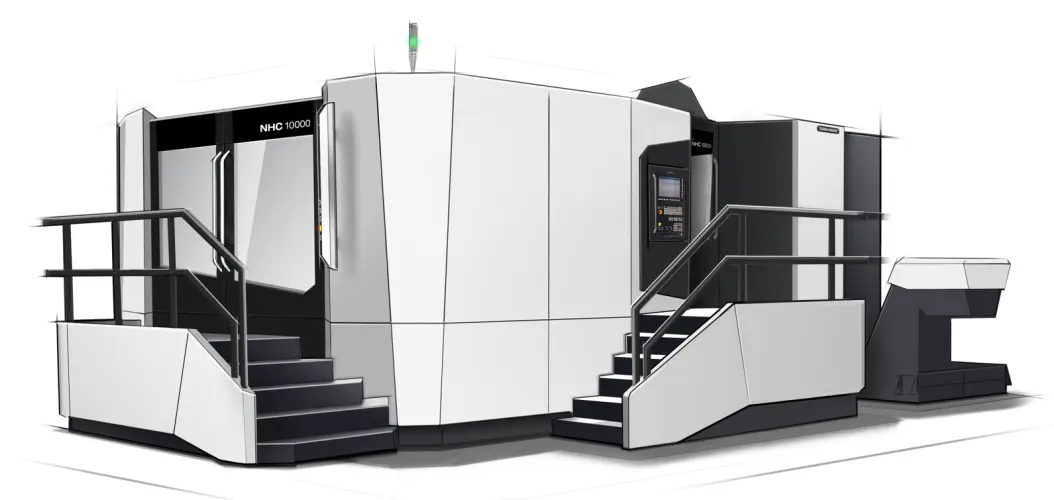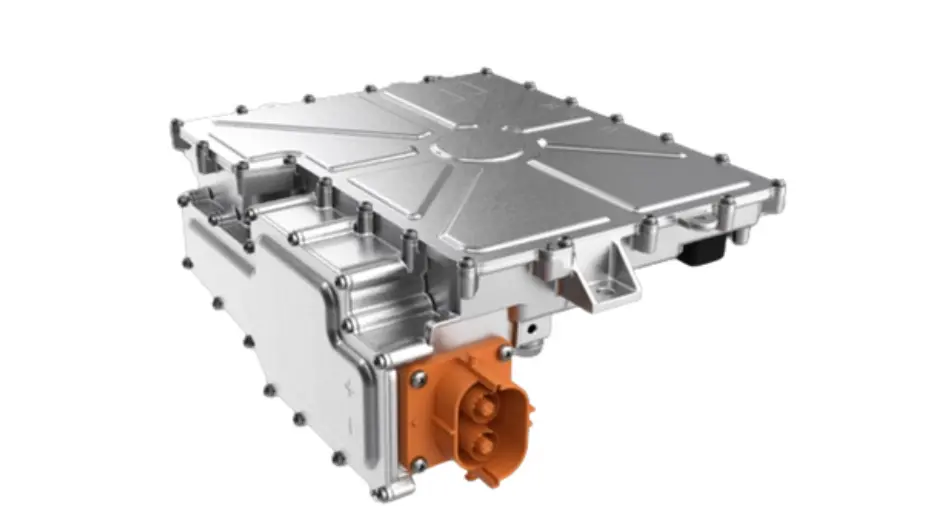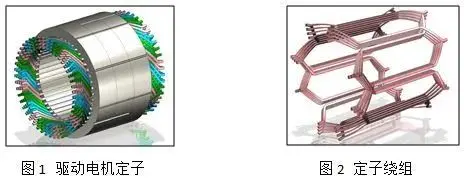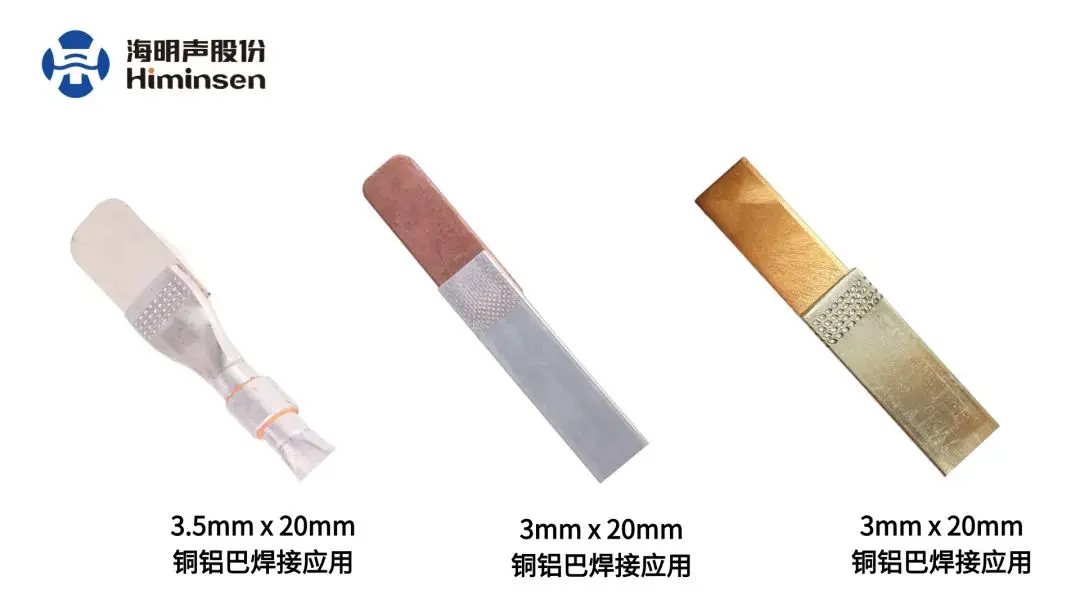产品开发的平台方法
2018-09-19 20:28:04· 来源:洞云书屋
(注:本文是译文,Original author: David Robertson )The platform approach to product development is a key success factor in many markets. The platform approach allows a company to quickly and efficiently develop a set of
(注:本文是译文,Original author: David Robertson )
The platform approach to product development is a key success factor in many markets. The platform approach allows a company to quickly and efficiently develop a set of differentiated products. By sharing components and production processes across a platform of products, companies can develop products faster and more cheaply, increase the flexibility and responsiveness of their manufacturing processes, and take market share away from competitors that develop only one product at a time. For example, in the auto industry, Nobeoka and Cusumano (1994, 1995) showed that a platform approach was associated with market share gains of 5.1 percent per year, while firms pursuing a single model approach lost 2.2 percent per year.
这个平台的产品开发是许多市场的关键成功因素。平台方法允许公司快速有效地开发一套差异化产品。通过在产品平台上共享组件和生产过程,企业可以更快更便宜地开发产品,增加其制造过程的灵活性和响应性,并将市场份额从一次只开发一种产品的竞争者手中夺走。例如,在汽车行业,NoeNoka和CuuMuno(1994, 1995)表明,平台的方法与市场份额每年增长5.1%相关联,而追求单模型方法的公司每年损失2.2%。
What is a platform?
什么是平台?
A platform is the collection of assets that are shared by a set of products. These assets can be divided into four categories:
平台是由一组产品共享的资产的集合。这些资产可分为四类:
Components: the part designs of a product, the fixtures and tools needed to make them, the circuit designs, and the programs burned into programmable chips or stored on disks.
Processes: the equipment used to make components or to assemble components into products, and the design of the associated production process and supply chain.
Knowledge: design know-how, technology applications and limitations, production techniques, mathematical models, and testing methods. (See [Kim and Kogut, 1996] for an interesting discussion of the strategic role of knowledge platforms.)
People and relationships: teams, relationships among team members, relationships between the team and the larger organization, and relations with a network of suppliers.
组件:产品的零件设计、制造所需的夹具和工具、电路设计和程序烧成可编程芯片或存储在磁盘上。
工艺:用于制造部件或将部件组装成产品的设备,以及相关的生产工艺和供应链的设计。
知识:设计诀窍、技术应用和局限性、生产技术、数学模型和测试方法。
人员和关系:团队、团队成员之间的关系、团队和较大组织之间的关系,以及与供应商网络的关系。
The challenge of platform planning
平台规划面临的挑战
The central challenge of developing platform products is simultaneously meeting the needs of diverse market segments while conserving development and production resources. Developing platform products involves two sets of difficult tasks. First, a product planning and marketing activity addresses the problem of which market segments to enter, what the customers in each segment want, and what product attributes will appeal to those customers. Second, a system-level design activity addresses the problem of what product architecture should be used to simultaneously deliver the different products while also sharing many parts and production steps across the products. These two sets of tasks are challenging both because the tasks themselves are inherently complex and because their completion requires coordination among at least the marketing, design, and manufacturing functions of the firm. These functional groups may not be accustomed to working with each other, and can find such cooperation difficult due to differences in time frames, jargon, goals, and basic beliefs.
开发平台产品的核心挑战是同时满足不同细分市场的需求,同时节约开发和生产资源。开发平台产品涉及两组困难的任务。首先,产品规划和营销活动解决了哪些细分市场要进入的问题,每个细分市场中的客户想要什么,哪些产品属性将吸引这些客户。第二,系统级设计活动解决了什么样的产品架构应该被用来同时交付不同的产品的问题,同时也在产品上共享许多零件和生产步骤。这两组任务都具有挑战性,因为任务本身是复杂的,因为它们的完成需要至少在企业的营销、设计和制造功能之间进行协调。这些功能组可能不习惯于彼此合作,并且由于时间框架、术语、目标和基本信念的不同,可以发现这样的合作困难。
Platform planning is also difficult because of the many ways it can fail. We have observed two common dysfunctions in organizations attempting to create product platforms. First, organizational forces frequently hinder the ability to balance commonality and distinctiveness. One perspective can dominate the debate. Design or manufacturing engineers often prepare hard cost data showing how expensive it would be to create distinctive products, leading to products that are too similar from the customer’s perspective. This dysfunction was illustrated graphically (if perhaps inaccurately) by a Fortune magazine cover photograph in 1983 showing “look-alike” Chevrolet, Oldsmobile, Buick, and Pontiac automobiles (Fortune, 1983). Alternatively, the marketing function may mount a convincing argument that only completely different products will appeal to the different market segments, and that commonality is penny wise and pound foolish.
平台规划也是困难的,因为它可能失败的很多方式。我们观察到在试图创建产品平台的组织中有两种常见的功能障碍。首先,组织力量经常阻碍平衡共同性和独特性的能力。一种观点可以主导辩论。设计或制造工程师通常准备硬成本数据,显示如何创造昂贵的产品与众不同,导致产品过于相似,从客户的角度来看。这种功能障碍被图解(如果可能不准确)由财富杂志封面照片在1983显示“看起来像”雪佛兰,奥斯莫比尔,别克和庞蒂亚克汽车(财富,1983)。另一方面,营销功能可能会提出一个令人信服的论点,即只有完全不同的产品会吸引不同的细分市场,而共同性则是因小失大。
Platform planning in the auto industry
汽车工业中的平台规划
While we believe that the platform planning method we describe below is broadly applicable across many types of products, we illustrate the method using an example from the auto industry. Throughout the paper, we use the example of the design of an instrument panel (i.e., the “dashboard”) to illustrate the key ideas. An instrument panel is a critical part of new car’s design and plays several important functional roles. It provides structural support for heating, ventilation, and air conditioning (HVAC) ducts, components, switches, gauges, audio components, storage areas (such as the glove box), airbags, and a great deal of tubing and wiring. The instrument panel also must help absorb the shock of a front or side collision, and help prevent the car body from twisting during normal driving (which improves handling). The instrument panel has a strong role in the aesthetics of a new car: the look, feel, and even smell of an instrument panel can effect the appeal of the car. The look and feel of the instrument panel can also do a great deal to distinguish one car from another.
虽然我们相信,我们下面描述的平台规划方法广泛适用于许多类型的产品,我们举例说明的方法,从汽车行业的一个例子。在整个论文中,我们使用仪表板(即仪表板)的设计的例子来说明关键思想。仪表板是新车设计的关键部分,起着重要的作用。它为加热、通风和空调(暖通空调)管道、部件、开关、量规、音频部件、存储区域(如手套箱)、安全气囊和大量管道和布线提供结构支撑。仪表板还必须有助于吸收正面或侧面碰撞的冲击,并有助于防止车身在正常行驶过程中扭动(这提高了操控性)。仪表板在新车的美观性方面具有很强的作用:仪表盘的外观、感觉甚至气味可以影响汽车的吸引力。仪表板的外观和感觉也可以很好地区分一辆车和另一辆车。
Establish a product plan
制定产品计划
The product plan for the collection of products encompassed by the platform specifies what the distinct market offerings will be over time, and is usually taken from the company’s overall product plan. Exhibit 4 contains a product plan for a new platform showing a sporty coupe, a family sedan, and a family station wagon. The two axes of the chart correspond to the segments of the marketplace and to time. The timing and segment of each planned product are indicated by location on the chart. The genealogy of the products is indicated by the links on the chart.
The product plan is supported by a top-level description of each product. This description contains the customer profile (key needs, psychographics, and demographics), and a basic business plan (expected sales volumes and selling price range). The product plan indicates major models, but does not show every variant and option of the product.
产品计划是通过对每个产品的顶级描述来支持的。该描述包含客户档案(关键需求、心理图表和人口统计)和基本商业计划(预期销量和销售价格范围)。产品计划指示主要模型,但不显示产品的每个变体和选项。
The product plan is linked to several other key issues and pieces of information, including:
产品计划与其他几个关键问题和信息相关,包括:
Availability of development resources.
Life cycles of current products.
Expected life cycles of competitive offerings.
Timing of major production system changes.
Availability of key product technologies.
开发资源的可用性。
当前产品的生命周期。
竞争产品的预期生命周期。
主要生产系统变化的时机。
关键产品技术的可用性。
The product plan is reflective of the firm’s product strategy. Some firms will choose to simultaneously issue several products, while others will choose to launch products in succession.
产品计划反映了公司的产品战略。有些公司会选择同时发行几款产品,而另一些公司则会选择陆续推出产品。
The platform approach to product development is a key success factor in many markets. The platform approach allows a company to quickly and efficiently develop a set of differentiated products. By sharing components and production processes across a platform of products, companies can develop products faster and more cheaply, increase the flexibility and responsiveness of their manufacturing processes, and take market share away from competitors that develop only one product at a time. For example, in the auto industry, Nobeoka and Cusumano (1994, 1995) showed that a platform approach was associated with market share gains of 5.1 percent per year, while firms pursuing a single model approach lost 2.2 percent per year.
这个平台的产品开发是许多市场的关键成功因素。平台方法允许公司快速有效地开发一套差异化产品。通过在产品平台上共享组件和生产过程,企业可以更快更便宜地开发产品,增加其制造过程的灵活性和响应性,并将市场份额从一次只开发一种产品的竞争者手中夺走。例如,在汽车行业,NoeNoka和CuuMuno(1994, 1995)表明,平台的方法与市场份额每年增长5.1%相关联,而追求单模型方法的公司每年损失2.2%。
What is a platform?
什么是平台?
A platform is the collection of assets that are shared by a set of products. These assets can be divided into four categories:
平台是由一组产品共享的资产的集合。这些资产可分为四类:
Components: the part designs of a product, the fixtures and tools needed to make them, the circuit designs, and the programs burned into programmable chips or stored on disks.
Processes: the equipment used to make components or to assemble components into products, and the design of the associated production process and supply chain.
Knowledge: design know-how, technology applications and limitations, production techniques, mathematical models, and testing methods. (See [Kim and Kogut, 1996] for an interesting discussion of the strategic role of knowledge platforms.)
People and relationships: teams, relationships among team members, relationships between the team and the larger organization, and relations with a network of suppliers.
组件:产品的零件设计、制造所需的夹具和工具、电路设计和程序烧成可编程芯片或存储在磁盘上。
工艺:用于制造部件或将部件组装成产品的设备,以及相关的生产工艺和供应链的设计。
知识:设计诀窍、技术应用和局限性、生产技术、数学模型和测试方法。
人员和关系:团队、团队成员之间的关系、团队和较大组织之间的关系,以及与供应商网络的关系。
The challenge of platform planning
平台规划面临的挑战
The central challenge of developing platform products is simultaneously meeting the needs of diverse market segments while conserving development and production resources. Developing platform products involves two sets of difficult tasks. First, a product planning and marketing activity addresses the problem of which market segments to enter, what the customers in each segment want, and what product attributes will appeal to those customers. Second, a system-level design activity addresses the problem of what product architecture should be used to simultaneously deliver the different products while also sharing many parts and production steps across the products. These two sets of tasks are challenging both because the tasks themselves are inherently complex and because their completion requires coordination among at least the marketing, design, and manufacturing functions of the firm. These functional groups may not be accustomed to working with each other, and can find such cooperation difficult due to differences in time frames, jargon, goals, and basic beliefs.
开发平台产品的核心挑战是同时满足不同细分市场的需求,同时节约开发和生产资源。开发平台产品涉及两组困难的任务。首先,产品规划和营销活动解决了哪些细分市场要进入的问题,每个细分市场中的客户想要什么,哪些产品属性将吸引这些客户。第二,系统级设计活动解决了什么样的产品架构应该被用来同时交付不同的产品的问题,同时也在产品上共享许多零件和生产步骤。这两组任务都具有挑战性,因为任务本身是复杂的,因为它们的完成需要至少在企业的营销、设计和制造功能之间进行协调。这些功能组可能不习惯于彼此合作,并且由于时间框架、术语、目标和基本信念的不同,可以发现这样的合作困难。
Platform planning is also difficult because of the many ways it can fail. We have observed two common dysfunctions in organizations attempting to create product platforms. First, organizational forces frequently hinder the ability to balance commonality and distinctiveness. One perspective can dominate the debate. Design or manufacturing engineers often prepare hard cost data showing how expensive it would be to create distinctive products, leading to products that are too similar from the customer’s perspective. This dysfunction was illustrated graphically (if perhaps inaccurately) by a Fortune magazine cover photograph in 1983 showing “look-alike” Chevrolet, Oldsmobile, Buick, and Pontiac automobiles (Fortune, 1983). Alternatively, the marketing function may mount a convincing argument that only completely different products will appeal to the different market segments, and that commonality is penny wise and pound foolish.
平台规划也是困难的,因为它可能失败的很多方式。我们观察到在试图创建产品平台的组织中有两种常见的功能障碍。首先,组织力量经常阻碍平衡共同性和独特性的能力。一种观点可以主导辩论。设计或制造工程师通常准备硬成本数据,显示如何创造昂贵的产品与众不同,导致产品过于相似,从客户的角度来看。这种功能障碍被图解(如果可能不准确)由财富杂志封面照片在1983显示“看起来像”雪佛兰,奥斯莫比尔,别克和庞蒂亚克汽车(财富,1983)。另一方面,营销功能可能会提出一个令人信服的论点,即只有完全不同的产品会吸引不同的细分市场,而共同性则是因小失大。
Platform planning in the auto industry
汽车工业中的平台规划
While we believe that the platform planning method we describe below is broadly applicable across many types of products, we illustrate the method using an example from the auto industry. Throughout the paper, we use the example of the design of an instrument panel (i.e., the “dashboard”) to illustrate the key ideas. An instrument panel is a critical part of new car’s design and plays several important functional roles. It provides structural support for heating, ventilation, and air conditioning (HVAC) ducts, components, switches, gauges, audio components, storage areas (such as the glove box), airbags, and a great deal of tubing and wiring. The instrument panel also must help absorb the shock of a front or side collision, and help prevent the car body from twisting during normal driving (which improves handling). The instrument panel has a strong role in the aesthetics of a new car: the look, feel, and even smell of an instrument panel can effect the appeal of the car. The look and feel of the instrument panel can also do a great deal to distinguish one car from another.
虽然我们相信,我们下面描述的平台规划方法广泛适用于许多类型的产品,我们举例说明的方法,从汽车行业的一个例子。在整个论文中,我们使用仪表板(即仪表板)的设计的例子来说明关键思想。仪表板是新车设计的关键部分,起着重要的作用。它为加热、通风和空调(暖通空调)管道、部件、开关、量规、音频部件、存储区域(如手套箱)、安全气囊和大量管道和布线提供结构支撑。仪表板还必须有助于吸收正面或侧面碰撞的冲击,并有助于防止车身在正常行驶过程中扭动(这提高了操控性)。仪表板在新车的美观性方面具有很强的作用:仪表盘的外观、感觉甚至气味可以影响汽车的吸引力。仪表板的外观和感觉也可以很好地区分一辆车和另一辆车。
Establish a product plan
制定产品计划
The product plan for the collection of products encompassed by the platform specifies what the distinct market offerings will be over time, and is usually taken from the company’s overall product plan. Exhibit 4 contains a product plan for a new platform showing a sporty coupe, a family sedan, and a family station wagon. The two axes of the chart correspond to the segments of the marketplace and to time. The timing and segment of each planned product are indicated by location on the chart. The genealogy of the products is indicated by the links on the chart.
The product plan is supported by a top-level description of each product. This description contains the customer profile (key needs, psychographics, and demographics), and a basic business plan (expected sales volumes and selling price range). The product plan indicates major models, but does not show every variant and option of the product.
产品计划是通过对每个产品的顶级描述来支持的。该描述包含客户档案(关键需求、心理图表和人口统计)和基本商业计划(预期销量和销售价格范围)。产品计划指示主要模型,但不显示产品的每个变体和选项。
The product plan is linked to several other key issues and pieces of information, including:
产品计划与其他几个关键问题和信息相关,包括:
Availability of development resources.
Life cycles of current products.
Expected life cycles of competitive offerings.
Timing of major production system changes.
Availability of key product technologies.
开发资源的可用性。
当前产品的生命周期。
竞争产品的预期生命周期。
主要生产系统变化的时机。
关键产品技术的可用性。
The product plan is reflective of the firm’s product strategy. Some firms will choose to simultaneously issue several products, while others will choose to launch products in succession.
产品计划反映了公司的产品战略。有些公司会选择同时发行几款产品,而另一些公司则会选择陆续推出产品。
举报 0
收藏 0
分享 112
-
比亚迪发布2024年ESG报告 以技术创新驱动可持续
2025-03-26 -
旭化成精细化工(南通)新工厂竣工
2025-03-18 -
新品上市|FLIR Si2x系列防爆声学成像仪,引领
2025-03-13 -
Spectrum推出可由以太网控制的超高速GHz数字化
2025-03-12
编辑推荐
最新资讯
-
思看科技受邀出席第三届联合国教科文
2025-04-27 13:29
-
聚势谋远,智领新程——五菱柳机以硬
2025-04-27 13:22
-
聚势求新、智驱未来——五菱工业底盘
2025-04-27 13:22
-
向轻量化、智能化迈进,助力建设国家
2025-04-27 13:21
-
五菱工业:以“中国智造”领跑绿色未
2025-04-27 13:21











